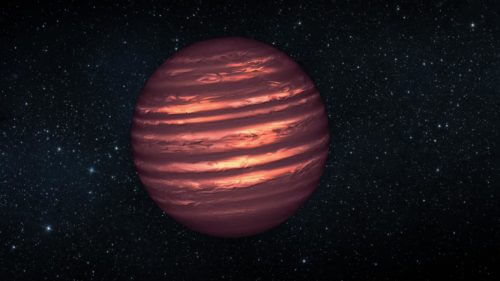This is according to a recent survey of dense star clusters, where an abundance of brown dwarfs is found - an intermediate body between a planet and a star

Our galaxy may contain up to 100 billion brown dwarfs. This is according to a study by an international team of astronomers, led by Koraljka Muzic from the University of Lisbon and Alex Schultz from the University of St. Andrews. On Thursday, July 6, Schultz presented his survey of dense star clusters, where brown dwarfs are abundant, at the National Astronomical Meeting at the University of Hull.
Brown dwarfs are objects with an intermediate mass between stars and planets where the mass is too low to maintain stable hydrogen fusion in their cores (the hallmark of stars like the Sun). After the initial discovery of brown dwarfs in 1995, scientists realized that they are a natural byproduct of processes that mainly lead to the formation of stars and planets.
All the thousands of brown dwarfs found so far are relatively close to the Sun. The vast majority are within a radius of 1,500 light years, simply because these objects shine with weak light and are therefore difficult to observe. Most of the brown dwarfs found so far are located in regions where stars are formed, but only in relatively small regions with a low star density.
In 2006, the team began searching for brown dwarfs in The Substellar Objects in Nearby Young Clusters (SONYC) survey. The astronomers observed five star clusters including NGC 1333, which is 1000 light-years away in the direction of the Perseus constellation. About a third of the objects in the cluster were brown dwarfs, a higher proportion than seen so far.
To determine whether NGC 1333 is indeed an unusual cluster, the team turned in 2016 to a more distant star cluster, RCW 38, in the constellation Vela. This cluster has a high density of more massive stars, so the conditions there are relatively different to other clusters.
RCW 38 is 5,500 light-years away, meaning that the brown dwarfs in it reflect very little light, and are difficult to detect next to the bright stars. To get a clear picture, the team used the NACO Adaptive Optical Camera on the Very Large Telescope at the European Southern Observatory in Chile, observed the star cluster in a three-hour exposure and combined their photographs with previous photographs of the cluster.
The researchers discovered many brown dwarfs in RCW 38 - about half the number of normal stars - and realized that the environment in which the stars formed, whether the stars are more or less massive, dense or less dense, has only a small effect on the formation of brown dwarfs.
Schulz says: "We found brown dwarfs in these clusters, and no matter what type of cluster, brown dwarfs are very common, they form alongside stars in clusters, so our work points to a huge number of brown dwarfs there."
Researchers estimate that in our galaxy, the Milky Way, there are between 25 and 100 billion brown dwarfs. The survey confirms the fact that these dim objects are everywhere.
For a notice of the Royal Astronomical Socieyty
More of the topic in Hayadan:
Double brown dwarfs were discovered for the first time

4 תגובות
my father
You meant 2000 years...
The brown dwarfs do not *reflect* light (almost) but the intention was probably to *radiate* light
If there is a planet that orbits a heat dwarf close enough, it may have conditions that are suitable for the existence of liquid water and therefore also life, like on Earth.
1000 light years from us is already a distance to which you can send a WhatsApp message and receive an answer after about a thousand years.
Wonderful news! Find the kidnapped Yemenis.
(Are disgusting jokes allowed? If it's not allowed, then father - please delete 🙂